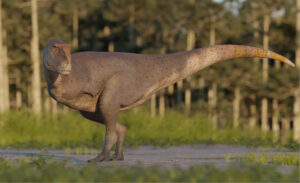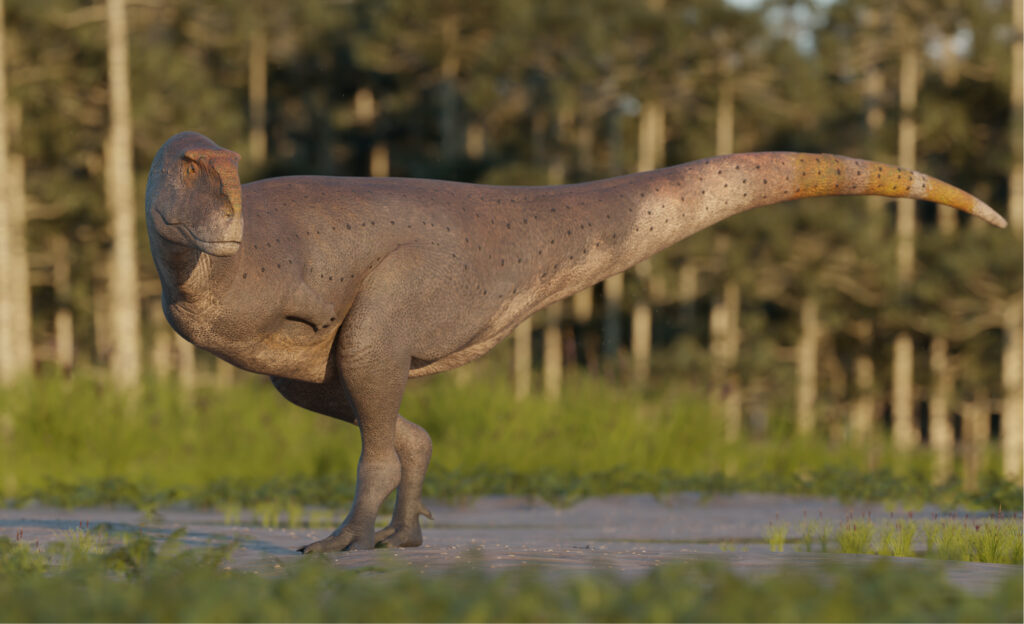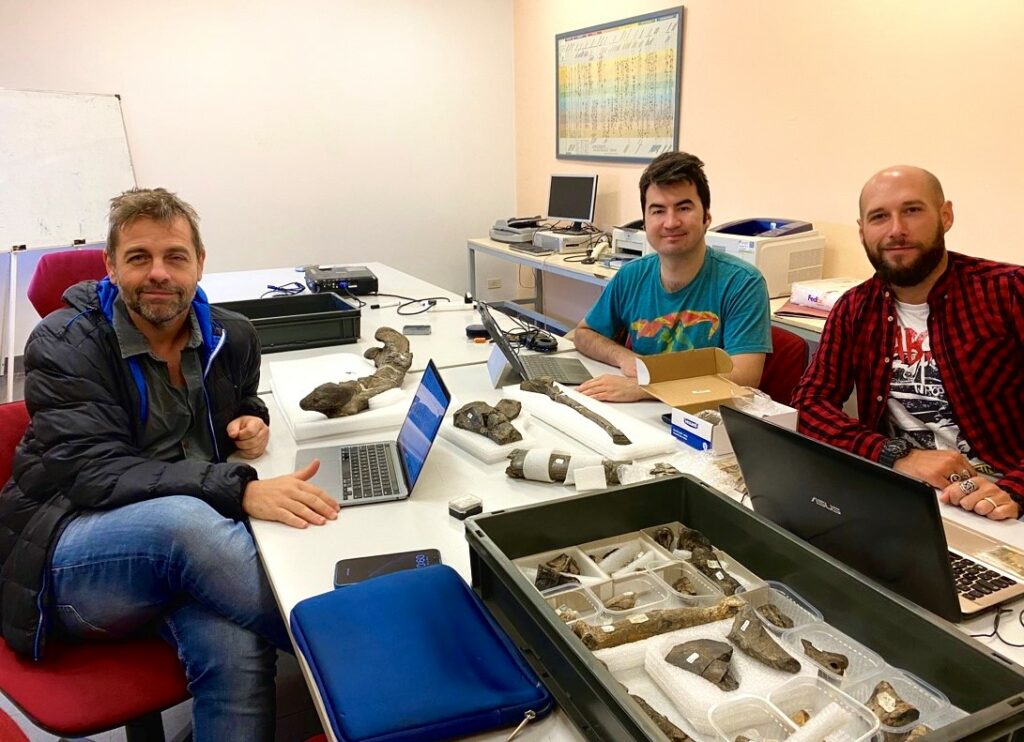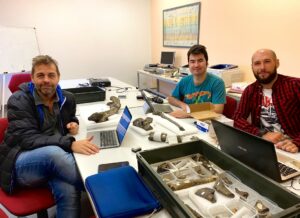CUHK
News Centre
CUHK scholar and National Geographic Explorer discover a new carnivorous dinosaur species Koleken inakayali in Patagonia
A groundbreaking fieldwork discovery in Patagonia, South America has unveiled Koleken inakayali, a new carnivorous dinosaur species belonging to the unique Gondwanan dinosaur group known as abelisaurids. Led by Dr Michael Pittman, Assistant Professor at The Chinese University of Hong Kong (CUHK)’s School of Life Sciences, and National Geographic Explorer Dr Diego Pol, the research team’s sustained exploration efforts in the 69-million-year-old La Colonia Formation have yielded remarkable results, challenging previous assumptions and shedding new light on the Late Cretaceous period.
Gondwana was an ancient southern supercontinent that included what is now South America, Africa, India, Madagascar, Australia and Antarctica. In the time just before the end-Cretaceous extinction about 66 million years ago, unique dinosaur groups and dinosaurs that were uncommon elsewhere called Gondwana home. One of these unique Gondwanan dinosaur groups was the carnivorous abelisaurids, popularised by the iconic horned “meat bull” Carnotaurus that was discovered in Patagonia almost 40 years ago and that featured in the movie Jurassic World and the documentary Prehistoric Planet.
The team’s research in the La Colonia Formation where the Carnotaurus fossil was found has led to the discovery of a new abelisaurid species. It features a number of differences from Carnotaurus, including a smaller size and the absence of skull horns, and shows that at least two abelisaurid species lived in La Colonia close to the end of the dinosaur era.
Dr Pittman said, “The new abelisaurid is called Koleken inakayali, which comes from the language of the native Tehuelche people of central Patagonia. Koleken refers to the claystone rock that the animal was entombed in and inakayali honours the Tehuelche leader Inakayal.” Koleken is known from a partial fossil skeleton including several skull bones, an almost complete series of back bones, a complete hip, several tail bones and almost complete legs. Dr Pittman and Dr Pol studied Koleken with international experts Dr Fernando Novas, Dr David Černý, Dr Ignacio Cerda, and CUHK postdoctoral researcher Dr Mattia Baiano. The findings were published as the cover article of the special issue ‘Analysing Datasets in Palaeontology’ edited by Dr Pittman, Dr Pol and their colleague Dr Santiago Catalano for Cladistics, the international journal of the Willi Hennig Society.
With the new information provided by Koleken, the team produced an updated family tree for abelisaurids and their close relatives, and used it to conduct a novel analysis of how quickly the different parts of the skeleton evolved through time. Dr Pol said, “We found that the closest relatives of abelisaurids – the noasaurids – had a high rate of vertebral and hindlimb evolution during the Jurassic period, whereas the abelisaurids themselves developed high rates of skull evolution at the same time and into the Early Cretaceous.” Dr Pittman added, “The results shed valuable light on how the body plan of abelisaurids and the wider ceratosaur group diversified through time.”
CUHK postdoctoral researcher Dr Baiano commented, “Koleken reinforces the idea that multiple abelisaurid species lived in the same habitats during the Late Cretaceous and helps to show that abelisaurids were actually quite diverse at the time, contrary to suggestions concerning other dinosaur groups.” Coupled with the new skeletal evolution discoveries, this study provides valuable insights into how dinosaurs and their global ecosystems evolved through time.
The full research paper can be found at: https://doi.org/10.1111/CLA.12583

A research team led by a CUHK scholar and a National Geographic Explorer discovered a new species of abelisaurid theropod in Patagonia called Koleken inakayali. Their discovery increases the diversity of these dominant carnivores within Late Cretaceous terrestrial ecosystems. Image Credit: Illustration by Gabriel Diaz Yantén.




